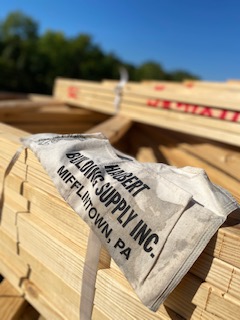
If you’re brand new to the homebuilding industry, chances are that you may have heard someone refer to a SPEC home, and you might have wondered exactly what that was.
You’re in luck. Grab yourself a coffee and get ready to learn. This post is going to give you the details.
A SPEC home is simply a new home that the Home Builder has started to build with the hopes that a Buyer will come along and purchase. Other terms you might hear used in place of SPEC Home are: Inventory Homes and/or Quick Move-In Homes.
Why is it called a SPEC?
Given the fact that a Home Builder is starting a new home without a Buyer, the Home Builder is “speculating” that he/she is going to make a profit by selling the house.
If all goes well and the house is sold (and the Home Builder has done a great job at controlling job costs), he/she does.
On the other hand, if the house sits for too long – or – the costs of the home get out of hand, the Home Builder may break even (if he/she is lucky) or lose money.
That’s the risk associated with building SPEC homes. Why would a Home Builder want to take on this risk? Read on!
Brad’s brief history of speculation
“Speculation” is defined as “the engagement in business transactions involving considerable risk – but – offering the chance of large gains.” (Source: Dictionary.com).
Here’s a famous example of early speculators…
Way way back in the late 1840’s, over 300,000 people rushed to California – seeking to make fortunes on gold (after a gentleman named James W. Marshall happened to find some and news spread across the country).
These gold-seekers were often called “Speculators” since they risked their way of life to migrate thousands of miles to hope they’d make their fortune in gold (ok….they were also called “Forty-Niners – but – stick with me here…).
You’ll find that some of those folks DID make a fortune. Some of them DID NOT.
That’s the same kind of logic that happens with SPEC homes. Some work out great, and the Home Builder makes money. Some just don’t “pan out” (see what I did there?).

Why Would a Home Builder Want To Risk It?
Certainly, the obvious choice is additional profit for his/her company. And the risk just might be worth it to the individual.
In a hot market – where Home Buyers are just clamoring for a new home, SPEC homes are less risky and offer a quicker move-in for those Buyers (who, in our day and time, just loooooove convenience).
In a slow market, the Home Builder may decide to build a SPEC to give a quicker move-in sale to a Home Buyer who needs a home sooner than waiting through the entire process of starting from scratch.
Quicker settlements means quicker money in the Home Builder’s pocket (since that’s when a Home Builder sees the final money from the sale of any House and recognizes the profit (hopefully)).
How Are SPEC Homes Financed?
Since there is no Home Buyer from the start, the Home Builder typically needs to secure financing from a Lender (unless, of course, that Home Builder has tons of money just sitting around in his/her bank account looking for something to do).
So, the Home Builder approaches a Lender and secures some type of SPEC Home Loan.
The Lender will usually pay a certain percentage of the full value (or full costs) of the new home itself. I’ve seen this anywhere from 60-75% of the costs.
Since Home Builders don’t see the profit until the end of the house (when that house settles), that last 25-40% of costs need to come from somewhere. And that “somewhere” has to be the bank account of the Home Builder.
This is also why getting a house complete as quickly as possible is important to a Home Builder’s cashflow (but that’s the topic of another post entirely).
In addition to the out-of-pocket costs that might happen from a Home Builder (which limits what else he/she could do with that tied-up money), interest payments are being made on the amount of the loan that has accumulated over time.
That’s even more money out of the Home Builder’s pocket. Yet another reason that the Home Builder is hoping for a quick sale on the SPEC Home.
The longer the SPEC sits, the more interest payments are needed (and/or the more out-of-pocket money spent stays, ahem, out-of-pocket).









Great explanation, Brad. Specs are definitely a risk. In the high demand, low interest rate market we just came out of, Specs didn’t pose much risk to builders. Now, with rapidly rising interest rates and decreasing demand, home buiders could potentially face a large inventory of unsold homes with “holding costs” they didn’t budget for.
Don’t you know it! “Holding costs” = “holding breaths!”
I want to add that one additional reason to build specs is to keep your workforce busy during slow times. Recruiting and retaining employees is challenging; if you don’t have enough work, they will start looking for other options.
Good point, Josh. Of course, in times when sales are super slow everywhere – a Home Builder needs to consider if it’s worth the risk to outlay additional funds that could sit for some time. But, the risk to keep your workforce going is one that many are willing to take.